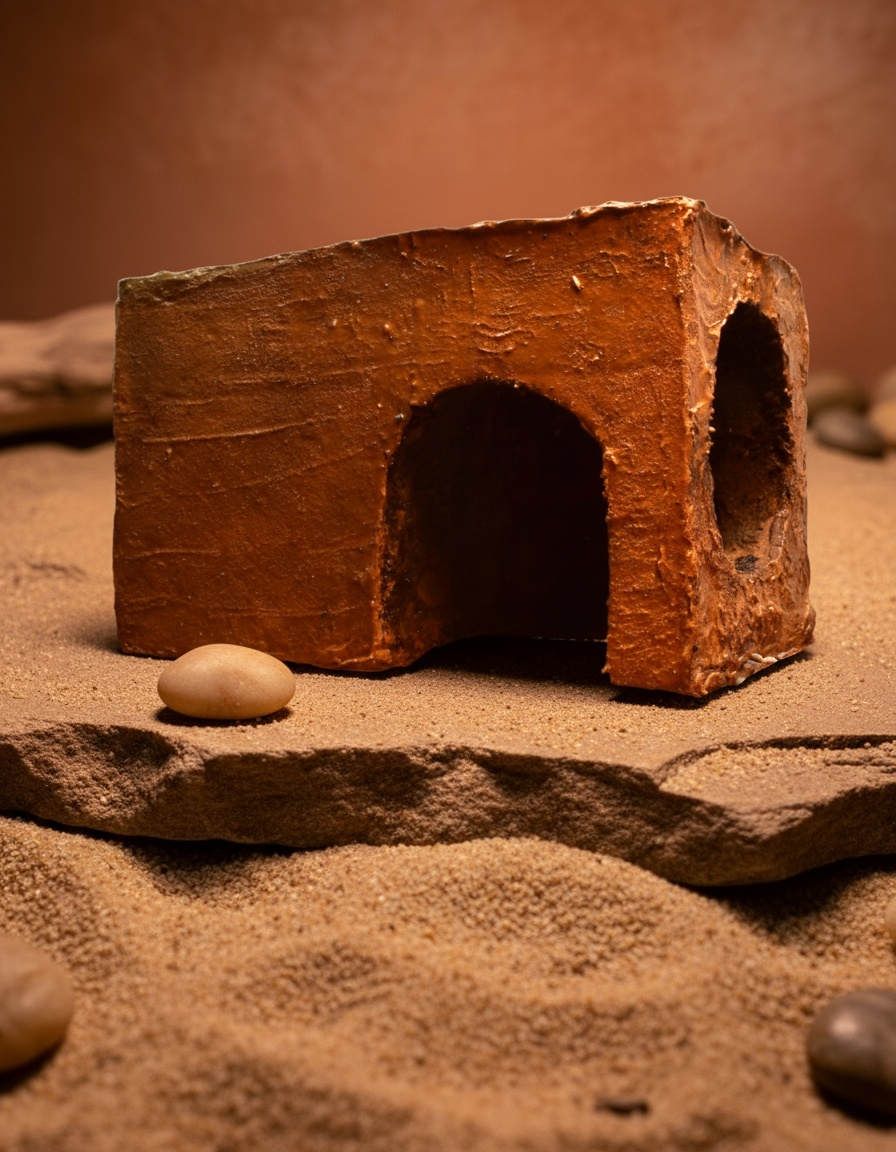


Upper Gallery Block
Elevated Terrain and Vertical Space
This block features reverse transition—four inches tapering to three inches. The narrowing passage guides geckos from spacious mid-sections back to standard corridors. Smooth dimensional changes support confident navigation in either direction.
Position this block in elevated configurations. Leopard geckos are semi-arboreal—they naturally seek higher ground for security and territory observation. Wild populations climb rocky outcrops to scan for predators, competitors, or prey. Captive animals retain this instinct.
The tapering tunnel at elevation mimics natural rock crevices found in cliff faces and boulder piles. Desert landscapes aren't flat. They include vertical relief—outcrops, ridges, and elevated stone formations. Your gecko expects access to varied heights.
The thermal challenge increases at elevation because heat rises and this block sits closer to heat lamps. Our insulating core construction prevents internal temperatures from becoming uncomfortably warm. Your gecko gets safe elevated refuge regardless of lamp proximity.
Your child learns applied earth science here. Why do deserts have rocky outcrops? How does erosion create cliff faces? What advantages do elevated positions provide for small animals? You're connecting geology to animal behavior.
The narrow exit at the top creates secure refuge. Animals feel protected in tight spaces when threatened. This upper position with a modest opening replicates the safest wild den sites.
Specs: 8" L × 5" W × 5" H
Elevated Terrain and Vertical Space
This block features reverse transition—four inches tapering to three inches. The narrowing passage guides geckos from spacious mid-sections back to standard corridors. Smooth dimensional changes support confident navigation in either direction.
Position this block in elevated configurations. Leopard geckos are semi-arboreal—they naturally seek higher ground for security and territory observation. Wild populations climb rocky outcrops to scan for predators, competitors, or prey. Captive animals retain this instinct.
The tapering tunnel at elevation mimics natural rock crevices found in cliff faces and boulder piles. Desert landscapes aren't flat. They include vertical relief—outcrops, ridges, and elevated stone formations. Your gecko expects access to varied heights.
The thermal challenge increases at elevation because heat rises and this block sits closer to heat lamps. Our insulating core construction prevents internal temperatures from becoming uncomfortably warm. Your gecko gets safe elevated refuge regardless of lamp proximity.
Your child learns applied earth science here. Why do deserts have rocky outcrops? How does erosion create cliff faces? What advantages do elevated positions provide for small animals? You're connecting geology to animal behavior.
The narrow exit at the top creates secure refuge. Animals feel protected in tight spaces when threatened. This upper position with a modest opening replicates the safest wild den sites.
Specs: 8" L × 5" W × 5" H
